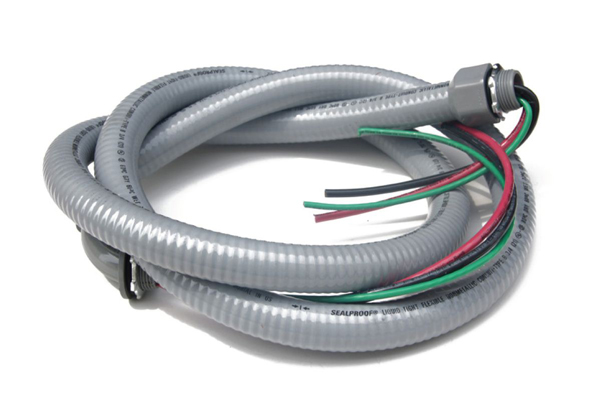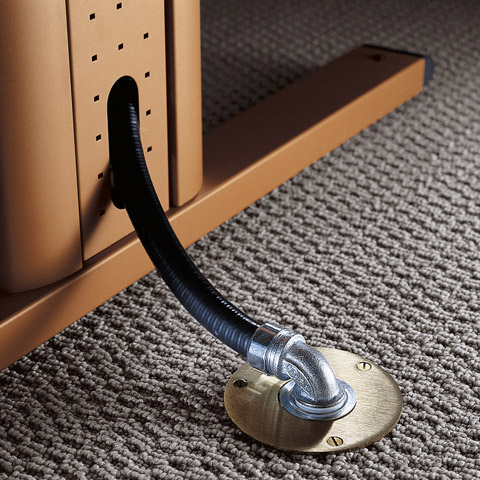
Here's what a standard power whip looks like, kind of like a hose filled with wires.
Google "Power Whip" and you'll come up with some interesting hits.
In Pokemon speak, a Power Whip is a fighting move in which a user "whirls its vines or tentacles to harshly lash the foe," according to Bulbapedia. While that may be a move you wish to deploy against that annoying gum-smacking cubicle neighbor of yours, that's not the type of power whip we're referring to today.
In electricians' speak, a power whip (AKA a base power infeed or base feed module) is type of cable that converts a fixed-in-place device to a modular asset, according to SpiderAgileTechnology.com.

Here's what a power whip looks like connected to the power source and a workstation.
In office furniture speak, a power whip is a 4- to 6-foot-long cable that connects the building's main power supply to the electrical system contained within the panels of cubicles or workstations. The power whip is what delivers the juice to the computers, phones and other devices your employees use to help make your business great.
The first step to installing a power whip is to properly install your furniture, making sure it's adjacent to a wall, column or floor-based power source (sometimes called floor monument or floor access, it's an electrical outlet on or under the floors surface that is connected to a conduit-carrying power beneath the floor, according to Haworth) as well as telecommunication cables and computer cable supply points.
For advice on optimal workstation layout, it's best to hire a reputable licensed electrician who is familiar with National Electrical Code (NEC) and local electrical codes; they're the only ones who can legally make hardwire connections to your building's power supply and they can offer insight on the best place to locate your workstations so that they're effectively and safely powered.
Follow the manufacturer's instructions for assembling the furniture, including how to properly connect the built-in wiring and cabling. Most manufacturers offer illustrated guides for how to assemble their cubicles, including detailed instructions for powering them.
Once they're assembled, the electrician can connect the power whip to the main power (this step can actually happen anytime during the process, but it is helpful to have the electrician on-hand early on to use as an installation consultant).
As long as the workstation wiring has been assembled correctly, once the power whip's connected, you should be able to start plugging in your computers and other devices.
For more information about power whip installation and electrical code, visit:
NECPlus.org Haworth's Guide to Understanding Electrical Terms Spider Agile Technology The Total Installer





